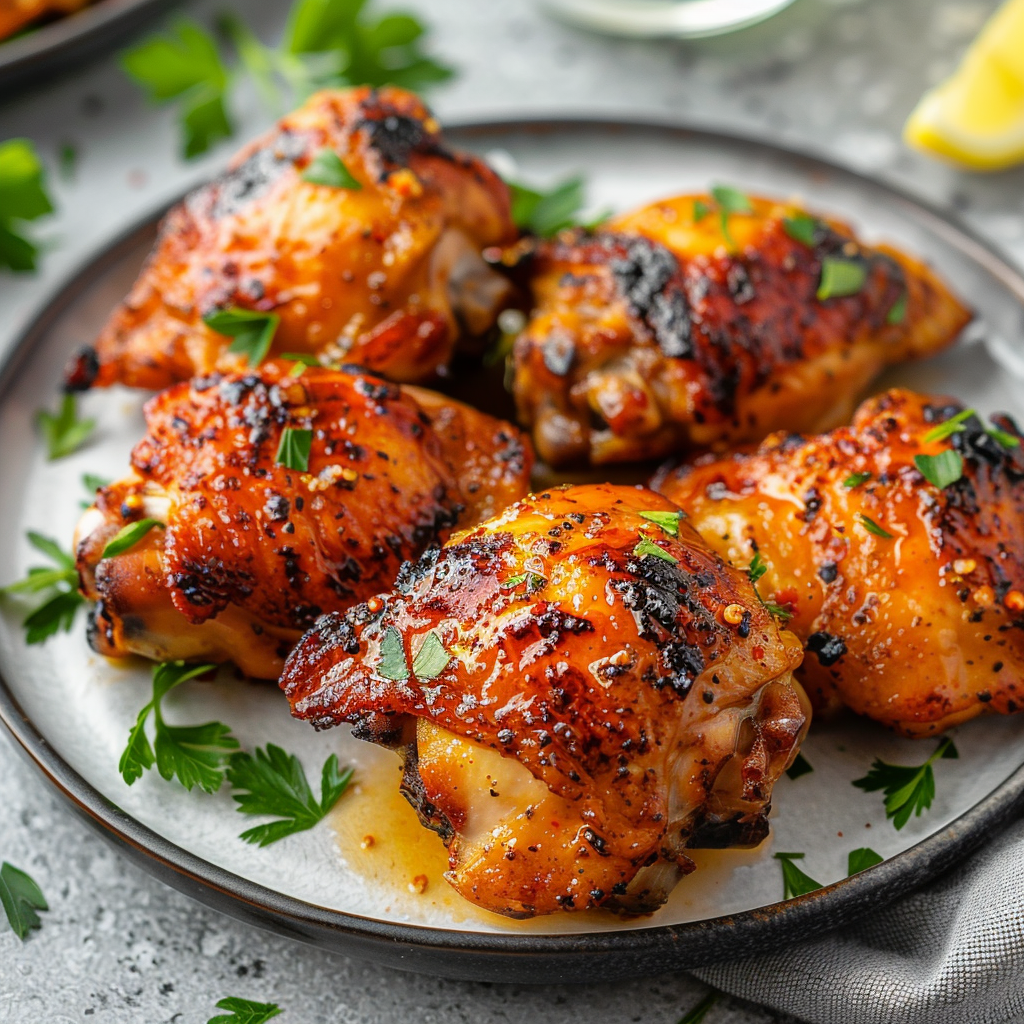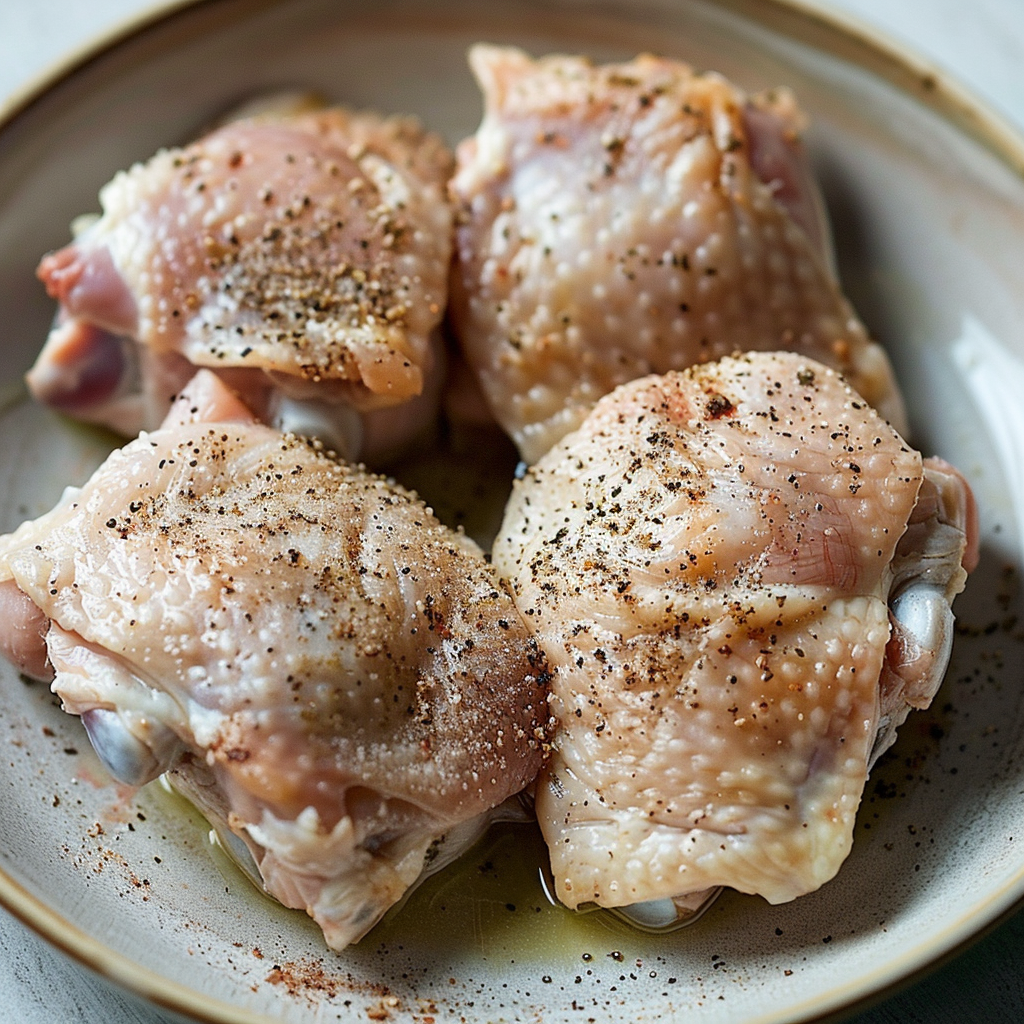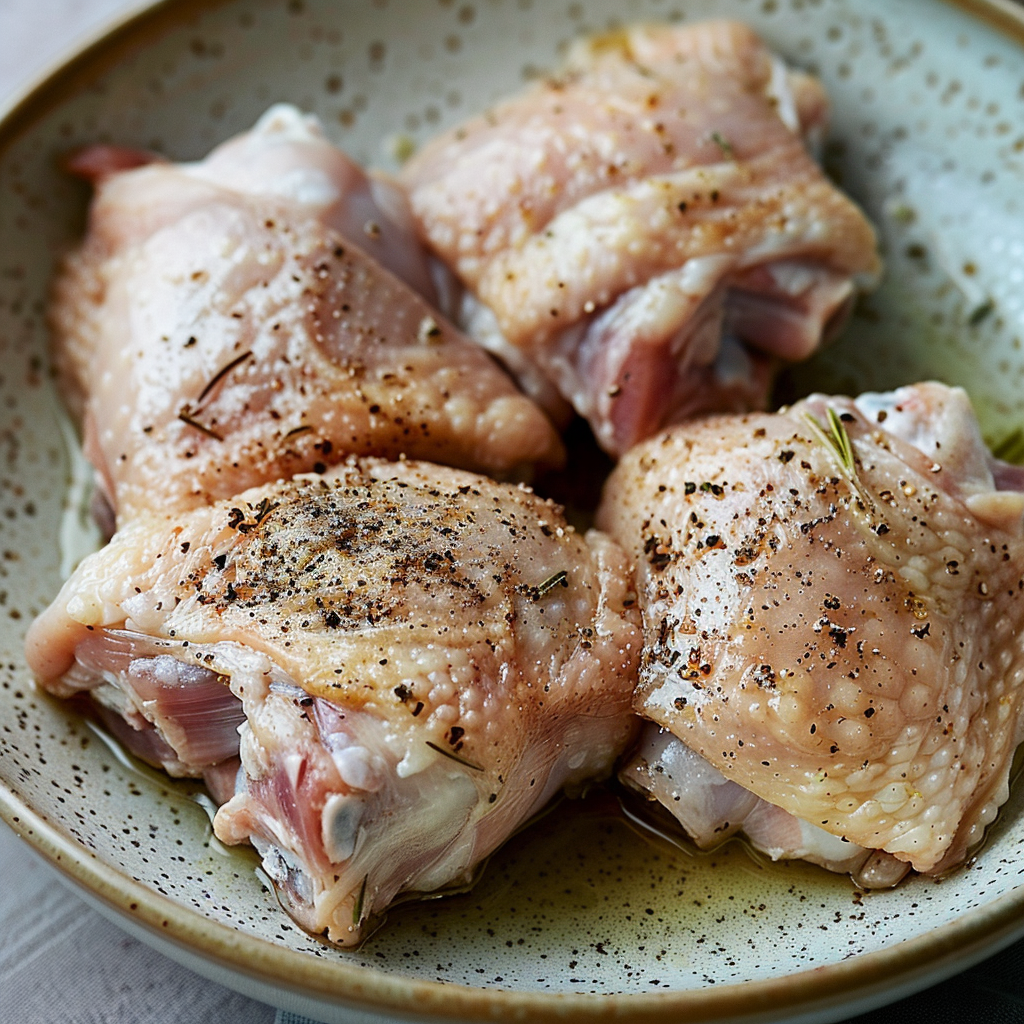Chicken thighs are a popular cut that brings rich flavor and succulence to various recipes. They’re economical, versatile, and easy to work with. For anyone curious about how long to boil chicken thighs, the cooking process might seem tricky, but following the right steps ensures perfectly tender results every time. This comprehensive guide will unravel the mysteries behind boiling chicken thighs for the most tender, juicy, and flavor-packed meals.
Why Choose Chicken Thighs Over Other Cuts?
Benefits of Chicken Thighs

Chicken thighs stand out among other cuts due to their rich flavor and tender texture. Compared to leaner options like chicken breast, thighs offer a juicier, more satisfying bite thanks to a higher fat content. They also tend to retain moisture during cooking, making them less prone to becoming dry or overcooked. Nutritionally, they are a good source of protein and contain essential vitamins and minerals. Additionally, they’re often more affordable than other cuts, making them an economical choice for many home cooks.
Different Culinary Uses of boil chicken thighs
Chicken thighs are versatile and can adapt to various cooking methods. They shine in slow-cooked dishes like stews and braises because the longer cooking time allows the flavors to meld beautifully. They’re perfect for grilling, as the fat helps prevent them from drying out. Thighs can also be used in stir-fries, where their tenderness complements the quick cooking process. Furthermore, they’re excellent for oven-baking, as the skin crisps up nicely while the meat stays succulent. Their adaptability means they can seamlessly fit into many global cuisines, whether you’re craving Asian, Mediterranean, or Latin American flavors.
Understanding the Boiling Method
How Boiling Works
Boiling is a straightforward cooking method that involves submerging food in water or broth, heated to 100°C (212°F). The high temperature and constant movement of water help evenly cook the food. For chicken thighs, boiling is often used to create a base for soups, stews, or shredded chicken. This method ensures that the chicken is cooked thoroughly while maintaining tenderness. The cooking liquid can be seasoned with herbs, spices, or aromatics to enhance the chicken’s flavor.
Safety Considerations
When boiling chicken thighs, it’s crucial to ensure they reach a safe internal temperature of at least 75°C (165°F) to kill harmful bacteria. It’s advisable to use a food thermometer to confirm the temperature. Keep raw chicken separate from other foods during preparation to prevent cross-contamination. Finally, any utensils or surfaces that have come into contact with raw chicken should be thoroughly sanitized before reuse. By following these safety practices, you can safely enjoy the tender and delicious results of boiled chicken thighs.
Preparation Steps Before Boiling Chicken Thighs
Proper Thawing Techniques
For the best texture and flavor, it’s essential to thaw chicken thighs properly before boiling. If they’re frozen, transfer them to the refrigerator and allow them to thaw slowly overnight. This gradual thawing maintains the quality of the meat. If you’re short on time, you can use the cold-water method: place the thighs in a leak-proof bag and submerge them in cold water, changing the water every 30 minutes until thawed. Avoid thawing chicken at room temperature, as this can promote bacterial growth.
Seasoning and Flavoring Options
Seasoning chicken thighs before boiling is key to enhancing their flavor. You can marinate them for a few hours or overnight with your preferred mix of spices and herbs. For an extra depth of flavor, consider adding aromatics like garlic, onion, or ginger directly to the cooking liquid. Herbs such as thyme, rosemary, or parsley can also be used. Additionally, spices like paprika, bay leaves, or peppercorns will infuse the meat with subtle tastes. Salt and pepper should be added to the cooking liquid to bring out the meat’s natural flavors.
Boiling Chicken Thighs: A Step-by-Step Guide
Choosing the Right Equipment
Select a pot that comfortably fits all the chicken thighs you plan to cook without overcrowding. Ideally, there should be enough room for the liquid to circulate freely around each thigh. A pot with a heavy base helps maintain consistent heat distribution. Use a lid to help retain moisture and heat during cooking.
Water Quantity and Temperature
Fill the pot with enough cold water or broth to fully cover the chicken thighs by about an inch or two. Cold liquid is preferred to start because it heats gradually, ensuring even cooking. Set the heat to medium-high until it reaches a gentle boil, then immediately reduce to a simmer to avoid overcooking and maintain tenderness. Keep the temperature between 85°C and 95°C (185°F to 203°F).
Timing Based on Thigh Size
Cooking time varies depending on the size of the thighs. Typically, smaller thighs will take around 25-30 minutes, while larger ones may require up to 40 minutes. It’s essential to check that the internal temperature reaches 75°C (165°F) to ensure they’re fully cooked. Once done, let the thighs rest for a few minutes before serving or incorporating them into your chosen recipe.
How Long to Boil Chicken Thighs for Different Recipes

Boiling Times for Soups and Broths
When preparing soups or broths, it’s beneficial to boil chicken thighs long enough to extract their flavors while achieving a tender texture. Typically, boiling for 45-60 minutes will allow the meat to become fall-off-the-bone tender, and infuse the cooking liquid with rich flavors. This timing is ideal if you’re planning to shred the chicken afterward or simply use it to enhance the overall taste of the soup.
Boiling Times for Casseroles and Salads
For casseroles and salads, the boiling time should be shorter since the chicken might undergo further cooking or is meant to retain a firmer texture. Simmer the chicken thighs for around 20-25 minutes, ensuring they reach an internal temperature of 75°C (165°F). This timing will produce moist, cooked-through meat that can be shredded or diced for your dish without becoming overly tender or mushy.
Common Mistakes When Boiling Chicken Thighs
Overcooking
Overcooking chicken thighs is a common mistake that can lead to dry, tough, and unappetizing meat. This typically occurs when the thighs are left in the boiling water for too long or when the heat is too high. Rapid boiling can cause the muscle fibers to contract tightly, squeezing out moisture and leading to a rubbery texture. Additionally, prolonged exposure to high temperatures can break down proteins excessively, leaving the meat stringy and flavorless.
To prevent overcooking, reduce the heat to a gentle simmer immediately after reaching a boil. Simmering at around 85°C to 95°C (185°F to 203°F) will ensure that the chicken cooks through gradually, retaining its natural juices. Check the internal temperature with a meat thermometer to ensure the meat reaches 75°C (165°F) without exceeding it. Once cooked, remove the thighs promptly to prevent further cooking from residual heat. Following these guidelines will help you consistently achieve tender, flavorful chicken thighs.
Undercooking
Undercooking chicken thighs poses a serious health risk, as harmful bacteria may survive if the meat does not reach a safe internal temperature. The recommended internal temperature for fully cooked chicken is 75°C (165°F). Undercooked chicken may have a pinkish hue or gelatinous texture near the bone, signaling that it requires additional cooking.
To avoid undercooking, ensure that the thighs are simmered at an appropriate temperature, ideally 85°C to 95°C (185°F to 203°F). Use a meat thermometer to measure the thickest part of the thigh, particularly near the bone, as this is often the last area to cook through. Be mindful of any cold spots that could result from uneven boiling. If in doubt, err on the side of caution by allowing a few extra minutes of simmering or by cutting the meat open to check for thorough doneness. Following these practices will help guarantee the chicken thighs are safely and properly cooked.
Not Using Fresh Ingredients
Failing to use fresh ingredients can significantly impact the quality and flavor of boiled chicken thighs. If the chicken is old or has not been stored properly, it may have an off taste or unpleasant odor that affects the entire dish. Likewise, wilted herbs, expired spices, or past-prime vegetables won’t deliver the vibrant and nuanced flavors expected in the cooking liquid.
To ensure a delicious result, always select fresh chicken thighs and refrigerate them promptly. If frozen, thaw them correctly in the refrigerator or cold water to maintain freshness. Use herbs, spices, and vegetables that are aromatic and colorful to enhance the flavor profile. Fresh garlic, onions, thyme, rosemary, and bay leaves can add depth to the broth. Taste the cooking liquid before boiling to adjust seasoning, ensuring a balanced flavor.
In summary, using fresh ingredients not only boosts taste but also ensures the healthiness and quality of your final dish. This attention to detail results in tender, flavorful chicken thighs that are enjoyable on their own or as part of another recipe.
How to Check for Doneness When Boiling Chicken Thighs
Internal Temperature Guidelines

The most reliable method to confirm that boiled chicken thighs are thoroughly cooked is to measure their internal temperature. The USDA recommends that poultry reach an internal temperature of at least 75°C (165°F) to ensure any harmful bacteria are eliminated. Insert a meat thermometer into the thickest part of the thigh, avoiding contact with the bone, as bones can conduct heat differently and give inaccurate readings. Once the thermometer consistently registers 75°C (165°F), the chicken is safe to eat.
If you don’t have a thermometer, you can extend the boiling time slightly to ensure thorough cooking, but be careful not to overcook the thighs, which can lead to dryness and a tough texture. For the best results, invest in a good meat thermometer, which will give you a quick and accurate measurement to guarantee that your chicken is properly cooked.
Visual Cues
While internal temperature is crucial, visual cues are also helpful for determining doneness. Properly cooked chicken thighs should appear opaque throughout, with the meat changing from pink to white or light brown. Pay special attention to the area near the bone, which is often the last part to cook through. If you notice any pinkish or translucent areas near the bone, return the thighs to the simmering water and cook longer.
The meat should also be firm but still tender, easily separating from the bone. Any gelatinous or rubbery textures indicate the chicken requires additional cooking time. Lastly, the juices that run out when you cut into the thigh should be clear. If the juices are tinged with pink or red, this is a sign that more time is needed. By combining temperature checks and visual cues, you can ensure your chicken thighs are safely and perfectly cooked.
FAQs About Boiling Chicken Thighs
How long do chicken thighs take to boil?
The boiling time for chicken thighs largely depends on their size and whether they’re bone-in or boneless. Typically, bone-in chicken thighs will take about 30-40 minutes to boil. Boneless thighs generally cook more quickly, usually in about 20-30 minutes. Regardless of size or cut, make sure the internal temperature reaches at least 75°C (165°F) to ensure safety and doneness.
Is 30 minutes enough to boil chicken?
Thirty minutes can be sufficient to boil chicken, especially if you’re cooking smaller or boneless thighs. Larger bone-in thighs may require a few additional minutes to reach the required internal temperature. Use a meat thermometer to confirm the thighs have cooked through completely. This ensures they are safe to eat and prevents overcooking.
When you boil chicken, how do you know it’s done?
A properly boiled chicken thigh will have an internal temperature of at least 75°C (165°F) when measured at the thickest part. The meat should appear opaque throughout, changing from pink to white or light brown. Additionally, the juices that run out should be clear. If they’re tinged with pink or red, the chicken needs more time. The meat should also easily separate from the bone but remain moist and tender.
Can you over boil chicken?
Yes, it is possible to over boil chicken. Overcooking can cause the meat to become dry, tough, or stringy. This usually occurs when the thighs are left in boiling water for too long or the temperature is too high. To prevent this, reduce to a gentle simmer once boiling is achieved and monitor the cooking time closely. For consistent results, check the internal temperature with a thermometer and remove the thighs promptly once they are fully cooked.

1 thought on “How Long to Boil Chicken Thighs”